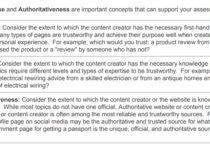Psychedelic Design Elements: The Science Behind Visual Engagement That Drives Results
The vibrant swirls of color that once defined 1960s concert posters have evolved into sophisticated marketing tools backed by neuroscience. Psychedelic design elements—those visually striking patterns, color combinations, and spatial arrangements that seem to pulse with energy—aren’t just artistic choices. They’re strategic engagement drivers with measurable impact on how users interact with digital experiences. Recent research shows that specific frequency and color pairings can significantly stimulate neural responses, creating immersive experiences that keep audiences engaged longer.
For marketing professionals seeking to break through digital noise, psychedelic design elements offer a powerful approach grounded in both aesthetic innovation and scientific understanding. But implementing these elements effectively requires balancing bold visual experimentation with strategic application and ethical considerations.
Key Takeaways
- Psychedelic design elements have a scientific foundation in neuroscience, with research showing that specific color combinations and frequencies (particularly 40 Hz stimuli) create neural entrainment that captures and maintains user attention.
- Four core psychedelic design elements drive engagement: chromatic neural entrainment (high-contrast color pairings), hyperpatterned information architecture (fractal-based patterns), motion dynamics (stroboscopic effects), and spatial ambiguity (depth perception manipulation).
- Strategic implementation of psychedelic design elements has demonstrated measurable marketing results, with case studies showing up to 27% increases in sign-ups and 34% longer session durations.
- Ethical implementation requires cultural sensitivity when using psychedelic design elements, including appropriate attribution and avoiding appropriation of sacred patterns from indigenous traditions.
- An incremental testing approach is most effective when integrating psychedelic design elements, starting with isolated elements in key interaction points before broader implementation.
TABLE OF CONTENTS:
From Counterculture to Corporate: The Evolution of Psychedelic Design
Psychedelic design originated in the 1960s counterculture movement, where artists like Wes Wilson and Victor Moscoso created concert posters with vibrant colors, warped typography, and hypnotic patterns. These designs weren’t just visually striking—they were intentionally disruptive, challenging conventional design principles to evoke altered perceptual states.
What began as an underground artistic movement has evolved into a sophisticated design approach with mainstream applications. Modern psychedelic design has migrated from analog poster art to AI-generated fractal patterns, from physical environments to digital interfaces. This evolution has been guided by advances in our understanding of how visual stimuli affect neural processing and user engagement.
Today’s marketing professionals are applying these principles across digital platforms, from e-commerce experiences to social media content, creating distinctive visual identities that capture attention in increasingly crowded spaces.
The Neuroscience Behind Psychedelic Design Elements
What makes psychedelic design elements so effective isn’t just their aesthetic appeal—it’s their direct impact on neural processing. Recent research shows that specific frequency and color pairings in psychedelic visual designs can significantly stimulate neural responses. According to a 2024 study published in Scientific Reports, 40 Hz chromatic flicker stimuli produce robust neural entrainment, with the strongest steady-state visually evoked potentials observed for color combinations such as amber/red.
This neural entrainment—the synchronization of brain wave patterns with external stimuli—is a key mechanism behind the effectiveness of psychedelic design elements. Further research published in PubMed Central demonstrates that entrainment at 32 Hz and 40 Hz yields stronger synchronization of neural ensembles in the primary visual cortex compared to 48 Hz, providing designers with specific frequency parameters for optimal visual impact.
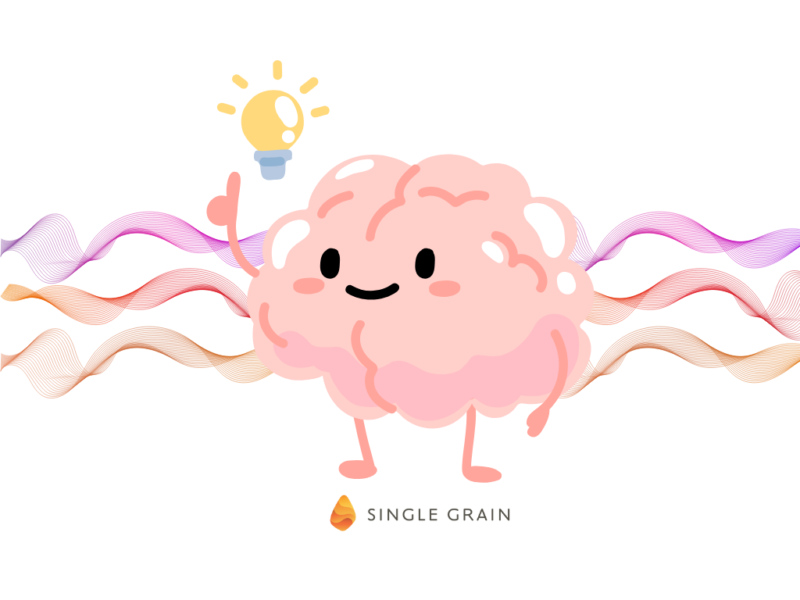
The brain’s processing of color adds another layer to the effectiveness of psychedelic design. The Journal of Neuroscience reports that amplification of chromatic signals occurs between the lateral geniculate nucleus and primary visual cortex, with greater temporal sensitivity in higher visual cortical areas. This means that vibrant, high-contrast color schemes characteristic of psychedelic design don’t just look eye-catching—they actually trigger stronger neural responses, making them more effective at capturing and holding attention.
Core Psychedelic Design Elements for Marketing
Understanding the fundamental elements that define psychedelic design can help marketers implement these principles effectively across various touchpoints:
Chromatic Neural Entrainment
Color is perhaps the most fundamental aspect of psychedelic design. Effective psychedelic color schemes typically feature:
- High-contrast complementary colors that create visual vibration
- Saturated hues that maximize neural response
- Strategic color pairings (like amber/red) that produce stronger neural entrainment
- Dynamic color shifts that maintain visual interest
The key is not just using vibrant colors, but understanding how specific color combinations interact with neural processing to create sustained engagement. This approach goes beyond traditional color theory to incorporate findings from neuroaesthetics and perception research.
Hyperpatterned Information Architecture
Patterns in psychedelic design aren’t random—they follow specific mathematical principles that balance complexity with coherence:
- Fractal-based patterns with optimal complexity levels (fractal dimensions between 1.3-1.7)
- Self-similar repetitions that create a sense of infinite depth
- Pattern density calibrated to preattentive processing thresholds
- Visual hierarchies that guide attention while maintaining exploratory freedom
These carefully calibrated patterns create an immersive visual experience that encourages exploration without overwhelming the user—a delicate balance that’s essential for effective marketing applications.
Motion and Temporal Dynamics
Static designs can incorporate implied motion, while digital applications can leverage actual animation:
- Stroboscopic effects calibrated to neural oscillation bands
- Morphing elements that create curiosity and encourage interaction
- Parallax scrolling with differential layer speeds
- Temporally modulated transitions between states
These motion elements create a sense of dynamism that keeps users engaged longer and encourages deeper exploration of content.
Spatial Ambiguity and Depth
Psychedelic design often plays with spatial perception, creating ambiguous figure-ground relationships that engage active processing:
- Simultaneous contrast effects that create visual depth
- Ambiguous spatial cues that encourage perceptual shifting
- Nested visual hierarchies that reward exploratory behavior
- Multistable elements that can be perceived in multiple ways
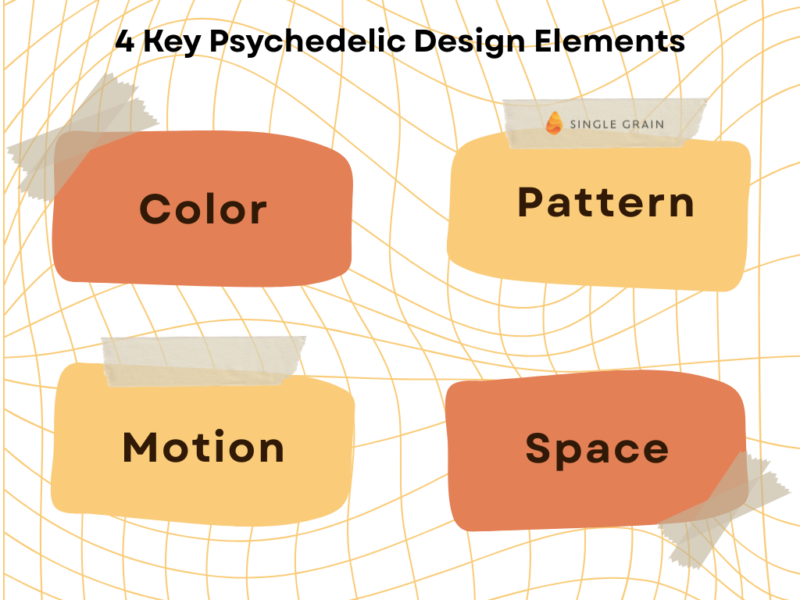
Practical Applications in Digital Marketing
Digital Interface Design and User Engagement
The integration of psychedelic design elements into digital interfaces has shown remarkable results for user engagement. The immersive, dynamic quality of these elements creates experiences that users want to explore, leading to measurable improvements in key metrics.
Case Study: Psychedelics Design Awards 2025
Challenge: Digital product teams needed to boost user engagement and conversion in saturated markets by differentiating their interfaces with cutting-edge psychedelic visuals.
Solution: Multiple companies integrated dynamic, AI-driven psychedelic design elements—including morphing visuals, real-time color-shifting gradients, interactive elements, and haptic feedback—to create immersive and personalized digital interfaces.
Results: One fintech app experienced a 27% lift in sign-ups and a 34% increase in session duration, while an e-commerce platform saw a 19% boost in completed checkouts.
Key Takeaway: Innovative psychedelic visual elements can significantly boost digital engagement and conversion rates when implemented thoughtfully.
Applying these design principles to interfaces requires a balanced approach. Designers must identify key interaction points where psychedelic elements can enhance the user experience without overwhelming or distracting from core functionality. Elements like dynamic color gradients, responsive morphing elements, and subtle animation patterns can significantly enhance engagement when applied strategically.
E-Commerce and Product Presentation
In e-commerce environments, psychedelic design elements can transform standard product browsing into memorable experiences. Key applications include:
- Chromatic product transitions that reveal additional information on hover
- Pattern-based organization systems that encourage exploration
- Dynamic scrolling experiences with differential movement speeds
- Ambiguous call-to-action designs that increase curiosity and click-through rates
These elements can be particularly effective for product page design, where creating memorable, emotionally engaging experiences can significantly impact conversion rates.
Brand Identity and Visual Storytelling
For brand identity development, psychedelic design elements offer opportunities to create distinctive, memorable visual languages. The strategic use of color combinations with specific neural entrainment properties can establish stronger brand recall and emotional associations.
Successful brand integration of psychedelic elements typically follows these principles:
- Selective application to key brand touchpoints rather than entire identity systems
- Consistent color relationships that maintain brand recognition
- Balanced pattern complexity that reflects brand personality
- Strategic animation parameters aligned with brand attributes
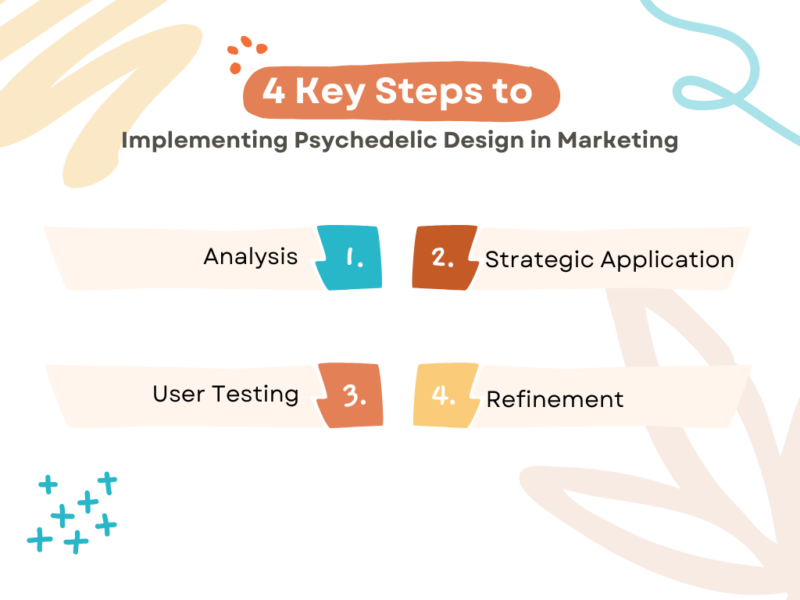
Ethical Considerations and Cultural Sensitivity
While psychedelic design elements offer powerful marketing tools, they also present significant ethical considerations. According to Psychedelics.Design, 65% of design professionals working with psychedelic-inspired elements in 2024 reported concerns over potential cultural insensitivity or superficial appropriation in their creative process.
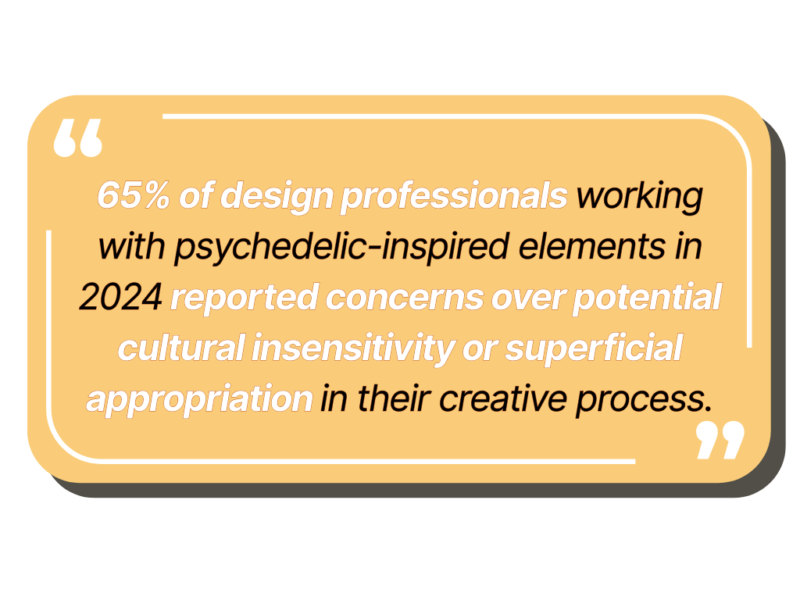
These concerns are well-founded. Psychedelic aesthetics have deep connections to indigenous traditions, spiritual practices, and countercultural movements focused on consciousness expansion. True North Psychology reports that over 90% of consensus guidelines published in 2023–2024 recommend explicit engagement with Indigenous communities when developing protocols or design elements inspired by psychedelic aesthetics.
Ethical implementation of psychedelic design elements requires:
- Cultural context awareness and appropriate attribution
- Avoiding appropriation of sacred or ceremonial patterns
- Understanding the historical and social context of psychedelic aesthetics
- Consulting with cultural experts when drawing inspiration from specific traditions
Implementation Strategies and Best Practices
Starting Small: Testing Psychedelic Elements
When integrating psychedelic design elements into your marketing strategy, an incremental approach typically yields the best results:
- Identify key interaction points – Look for areas where increased engagement would provide the most value
- Test isolated elements – Introduce individual psychedelic design elements rather than complete transformations
- A/B test variations – Compare different implementations to determine optimal parameters
- Gather qualitative feedback – User interviews can provide insights into emotional responses not captured by metrics
Starting with subtle implementations allows you to calibrate these powerful visual tools to your specific audience and business goals before broader implementation.
Measurement and Optimization
Effective implementation requires robust measurement frameworks:
| Metric Category | Key Measurements | Tools/Methods |
|---|---|---|
| Engagement | Session duration, scroll depth, interaction frequency | Analytics platforms, heatmaps |
| Conversion | Click-through rates, conversion path analysis | Funnel analysis, A/B testing |
| Emotional Response | Sentiment analysis, user feedback | Surveys, interviews, social listening |
| Retention | Return visit rates, brand recall measurement | Cohort analysis, brand studies |
While many ad creatives focus solely on immediate conversion metrics, psychedelic design elements often show their greatest value in deeper engagement and memorable brand experiences that drive long-term loyalty.
Tools and Resources
Several specialized tools can help marketers implement psychedelic design elements effectively:
- Neural response simulation tools that predict engagement based on color and pattern parameters
- Generative design platforms that create psychedelic patterns within brand guidelines
- Eye-tracking heatmap analytics that visualize attention patterns for psychedelic layouts
- Motion design libraries with pre-calibrated animation parameters for optimal neural entrainment
These tools make psychedelic design more accessible to marketing teams without specialized design expertise, enabling data-driven implementation and optimization.
Harnessing the Power of Psychedelic Design in Marketing
Psychedelic design elements represent a powerful frontier in marketing, where aesthetic innovation meets neuroscientific understanding. By strategically implementing these elements—from chromatic neural entrainment to hyperpatterned information architecture—marketers can create more engaging, memorable experiences that drive measurable results.
The most successful implementations balance bold visual innovation with ethical considerations and strategic application. As we’ve seen, thoughtfully applied psychedelic design elements can yield significant improvements in engagement metrics—from 27% increases in sign-ups to 34% longer session durations.
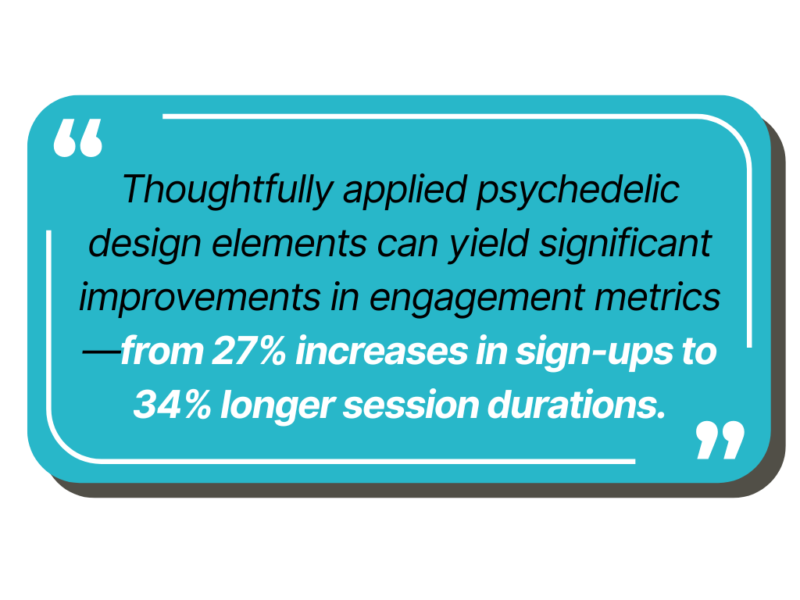
The key is approaching these powerful visual tools with both creative vision and analytical rigor. Understanding the neural mechanisms that make these elements effective allows for more precise, intentional implementation. If you’re looking to elevate your brand’s visual impact and create more engaging digital experiences, work with the leading creative strategy agency that understands how to harness these powerful design principles for measurable marketing results.
Related Video
The post Psychedelic Design Elements: The Science Behind Visual Engagement That Drives Results appeared first on Single Grain.

